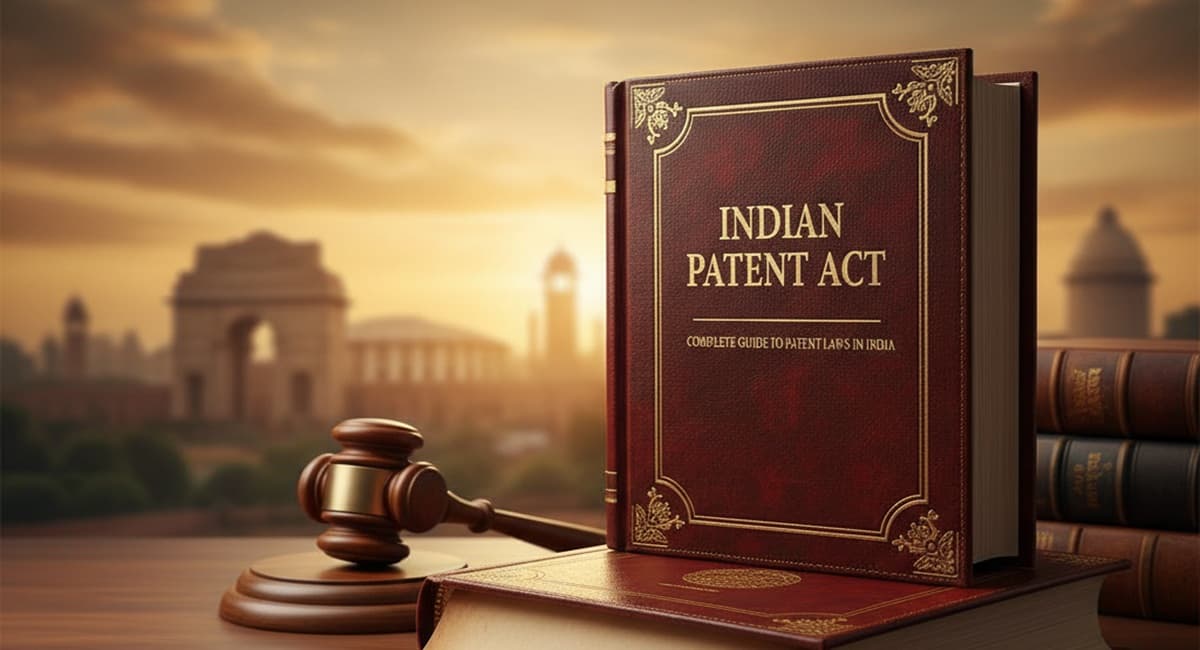The Indian Patent Act of 1970 stands as the cornerstone of intellectual property protection in India, safeguarding the rights of inventors and innovators across the nation. This comprehensive legislation has evolved significantly over the decades, adapting to global standards while maintaining India's unique developmental priorities.
Understanding the Indian Patent Act
The Patents Act, 1970, came into force on April 20, 1972, replacing the Indian Patents and Designs Act of 1911. This transformative legislation was designed to align India's patent system with the country's economic goals, particularly focusing on promoting indigenous innovation and making essential products, especially pharmaceuticals, accessible to the masses.
The Act is administered by the Controller General of Patents, Designs, and Trademarks, operating under the Department for Promotion of Industry and Internal Trade (DPIIT), Ministry of Commerce and Industry.
Key Features of the Indian Patent Act
What Can Be Patented?
Under the Indian Patent Act, a patent can be granted for an invention that meets three fundamental criteria:
Novelty: The invention must be new and not disclosed anywhere in the world before the filing date
Inventive Step: It must involve technical advancement or economic significance that is not obvious to a person skilled in the art
Industrial Application: The invention must be capable of being made or used in an industry
What Cannot Be Patented?
Section 3 and Section 4 of the Act explicitly exclude certain categories from patentability:
Inventions that are frivolous or contrary to natural laws
Discoveries of scientific principles or mathematical methods
Literary, artistic, or aesthetic creations
Methods of agriculture or horticulture
Medical treatments for humans or animals
Plants and animals in whole or part (except microorganisms)
Business methods or computer programs per se
Traditional knowledge or inventions that are essentially derived from traditional knowledge
Major Amendments to the Indian Patent Act
The TRIPS Compliance Amendments
India's entry into the World Trade Organization (WTO) in 1995 necessitated alignment with the Trade-Related Aspects of Intellectual Property Rights (TRIPS) agreement. This led to three significant amendments:
First Amendment (1999): Introduced exclusive marketing rights and extended patent term to 20 years from the date of filing.
Second Amendment (2002): Introduced provisions for grant of patents for microorganisms and microbiological processes, and removed the provision allowing pre-grant opposition by any person.
Third Amendment (2005): This was the most significant amendment that introduced product patents for pharmaceuticals and agrochemicals, replacing the earlier process patent regime. It also introduced stringent provisions to prevent evergreening of patents through Section 3(d).
Recent Developments
The Patent Rules have been regularly updated, with the latest amendments in 2020 and 2021 focusing on streamlining procedures, reducing fees for startups and educational institutions, and promoting ease of doing business.
Duration and Rights of Patent Holders
A patent granted under the Indian Patent Act provides protection for 20 years from the date of filing the application. During this period, the patent holder enjoys exclusive rights to:
Make, use, sell, or import the patented invention
License the patent to third parties
Take legal action against infringers
Transfer or assign patent rights
The Patent Filing Process in India
Understanding the patent filing process is crucial for inventors seeking protection. The journey typically involves:
Patent Search: Conducting a thorough search to ensure novelty
Drafting: Preparing detailed specifications and claims
Filing: Submitting the application with the Indian Patent Office
Publication: Application is published after 18 months
Examination: Request for examination within 48 months
Grant: Patent is granted if all requirements are met
For those looking to navigate this complex process, resources like this comprehensive guide on patenting your idea in India can provide valuable step-by-step assistance.
Compulsory Licensing Under Indian Law
One of the unique features of the Indian Patent Act is its robust compulsory licensing provisions under Section 84. This allows the government or third parties to use a patented invention without the patent holder's consent under specific circumstances:
The reasonable requirements of the public are not satisfied
The invention is not available at reasonably affordable prices
The invention is not worked in India
India granted its first compulsory license in 2012 for a cancer drug, setting a precedent for balancing patent rights with public health needs.
Patent Opposition Procedures
The Indian Patent Act provides two opportunities to challenge a patent application:
Pre-Grant Opposition (Section 25(1)): Any person can file opposition after publication but before grant, based on grounds specified in the Act.
Post-Grant Opposition (Section 25(2)): Any interested person can file opposition within one year from the date of publication of grant, providing an additional safeguard against improper patents.
International Patent Protection
While the Indian Patent Act provides protection within India's borders, inventors seeking global protection should consider:
Patent Cooperation Treaty (PCT): India is a signatory, allowing inventors to file a single international application
Paris Convention: Provides priority rights for filing in multiple countries
National Phase Filings: Entering specific countries within prescribed timeframes
Section 3(d): India's Anti-Evergreening Provision
Section 3(d) has garnered international attention for its role in preventing patent evergreening. This section states that derivatives of known substances are not patentable unless they show enhanced efficacy. This provision has been instrumental in:
Preventing trivial modifications to extend patent life
Ensuring genuine innovation is rewarded
Keeping medicines affordable
Promoting access to healthcare
The landmark Novartis case in 2013 upheld Section 3(d)'s constitutionality, affirming India's right to set patentability standards.
Patent Infringement and Remedies
The Indian Patent Act provides comprehensive remedies for patent infringement under Sections 104-114:
Injunctions: Temporary or permanent restraining orders
Damages: Monetary compensation for losses suffered
Account of Profits: Defendant must account for profits earned from infringement
Delivery Up: Infringing products must be handed over for destruction
Role of Patent Offices in India
India has four patent offices located in:
Delhi (serving North India)
Mumbai (serving West India)
Chennai (serving South India)
Kolkata (serving East India)
These offices have been modernized with electronic filing systems, online status tracking, and digital payment options, significantly improving efficiency and accessibility.
Patents and Startups in India
Recognizing the importance of innovation in startups, the Indian government has introduced several initiatives:
80% reduction in patent fees for startups and small entities
Fast-track examination for startup applications
Patent facilitation centers providing free assistance
Scheme for Startups Intellectual Property Protection (SIPP) offering financial support
Challenges in the Indian Patent System
Despite significant progress, several challenges remain:
Examination Delays: Pendency of applications remains a concern
Limited Awareness: Many inventors, especially in rural areas, lack awareness about patents
Litigation Costs: Patent litigation can be expensive and time-consuming
Skilled Manpower: Shortage of patent examiners and IP professionals
Future of Patent Law in India
The Indian patent landscape continues to evolve with:
Digitization: Moving toward a completely paperless system
AI and Machine Learning: Using technology for prior art searches and examination
Harmonization: Aligning with international best practices
Focus on Emerging Technologies: Developing frameworks for AI, biotechnology, and green technology patents
Conclusion
The Indian Patent Act represents a delicate balance between incentivizing innovation and ensuring public access to essential technologies and medicines. As India positions itself as a global innovation hub, understanding and effectively navigating the patent system becomes crucial for inventors, businesses, and policymakers alike.
Whether you're an individual inventor, a startup, or an established corporation, familiarizing yourself with the Indian Patent Act's provisions and procedures is the first step toward protecting your intellectual property. With ongoing reforms and increasing awareness, India's patent ecosystem is poised to support the next generation of inventors and innovators.
For those ready to take the next step in securing patent protection, understanding the detailed process and requirements is essential to success in this dynamic legal landscape.
Disclaimer: This article provides general information about the Indian Patent Act and should not be construed as legal advice. For specific patent-related matters, please consult a qualified patent attorney or agent.


